MPO Gene description This gene encodes a protein (Myeloperoxidase or MPO) that is part of an organism’s immune system and helps fight against pathogens (Ref). Myeloperoxidase produces molecules that harm bacteria but also our own cells in the process. Gene function Part of the host defense system of polymorphonuclear leukocytes. It is responsible for microbicidal activity against a wide range of organisms. In the stimulated PMN, MPO catalyzes the production of hypohalous acids, primarily hypochlorous acid in physiologic situations, and other toxic intermediates that greatly enhance PMN microbicidal activity. Myeloperoxidase (MPO) produces hypochlorous acid (HOCl) from hydrogen peroxide (H2O2) and chloride anion (Cl−) during the neutrophil’s respiratory burst. It requires heme as a cofactor. Furthermore, it oxidizes tyrosine to tyrosyl radical using hydrogen peroxide as an oxidizing agent. Hypochlorous acid and tyrosyl radical are toxic to cell, so they are used by the neutrophil to kill bacteria and other pathogens. However, this hypochlorous acid may also cause oxidative damage in host tissue. Moreover, MPO oxidation of apoA-I reduces HDL-mediated inhibition of apoptosis and inflammation. In addition, MPO mediates protein nitrosylation and the formation of 3-chlorotyrosine and dityrosine crosslinks. Recent studies have reported an association between elevated myeloperoxidase levels and the severity of heart disease. Elevated MPO levels more than doubled the risk for cardiovascular mortality over a 13-year period and could serve as a sensitive predictor for heart attacks in patients with chest pain. It has also been suggested that myeloperoxidase plays a significant role in the development of the atherosclerotic lesion and rendering plaques unstable. Measuring both MPO and CRP (C-reactive protein; a general and cardiac-related marker of inflammation) provided added benefit for risk prediction than just measuring CRP alone. NCBI Gene: Alzheimer’s disease Myeloperoxidase deficiency From UniProt: Myeloperoxidase deficiency (MPOD): A disorder characterized by decreased myeloperoxidase activity in neutrophils and monocytes that results in disseminated candidiasis. [MIM:254600]
Myeloperoxidase (MPO) is a heme protein synthesized during myeloid differentiation that constitutes the major component of neutrophil azurophilic granules. Produced as a single chain precursor, myeloperoxidase is subsequently cleaved into a light and heavy chain. The mature myeloperoxidase is a tetramer composed of 2 light chains and 2 heavy chains. This enzyme produces hypohalous acids central to the microbicidal activity of neutrophils. [provided by RefSeq, Nov 2014] From UniProt: Part of the host defense system of polymorphonuclear leukocytes. It is responsible for microbicidal activity against a wide range of organisms. In the stimulated PMN, MPO catalyzes the production of hypohalous acids, primarily hypochlorous acid in physiologic situations, and other toxic intermediates that greatly enhance PMN microbicidal activity. MPO Variants Included in your report or in your Raw Data file: All of the above are listed in ClinVar as linked to lower MPO protein levels which may translate into lower immune defense against microbes. Possible Consequences & Symptoms MPO deficiency classically presents with immune deficiency. Due to the decrease in reactive oxygen species, people with MPO may experience an increase in recurrent fungal infections, particularly Candida Albicans. MPO deficiency may also contribute to impairment in the reduction of Hydrogen Peroxide – an oxidative agent, into hypochlorous acid – a cellular disinfectant. This slower reduction may cause more burden to the Glutathione system as well as weaker defense against viruses, bacteria, and fungi. MPO Gene Expression Control The following substances increase MPO Gene function: N-Acetyl Cysteine The following substances decrease MPO Gene function: Caffeic Acid Depending on real status of MPO Gene expression, the below substances may both: increase or decrease expression of this gene: Vitamin C (Ascorbic Acid) Disease association Advanced information Binds 1 heme b (iron(II)-protoporphyrin IX) group covalently per monomer.
Potassium Chloride
Benzoic Acid (a food preservative)
Protocatechuic acid
Copper
Gallic Acid
Theophylline
Estrogen
Plant Oils
Butyrates
Progesterone
Syringic acid
Glutathione
Catechin
Sodium Cyanide
EGCG
Gallocatechol
Potassium Cyanide
Inflammation
Acute kidney injury
Reperfusion Injury
Colitis
Lung Neoplasms
Lung Diseases
Diabetes Mellitus, Experimental
Brain Diseases
Urticaria
Pancreatitis
The following transcription factors affect gene expression (Ref):
Gene Pathways:
Cofactor:
Molecular Function:
Biological Processes:
MPO Gene vs. Drugs & Compounds Interactions
CHECK YOUR MPO GENE STATUS HERE
This is a Lifestyle Genomics Research Centre’s Research Library entry. This educational content is issued with our DNA results.

